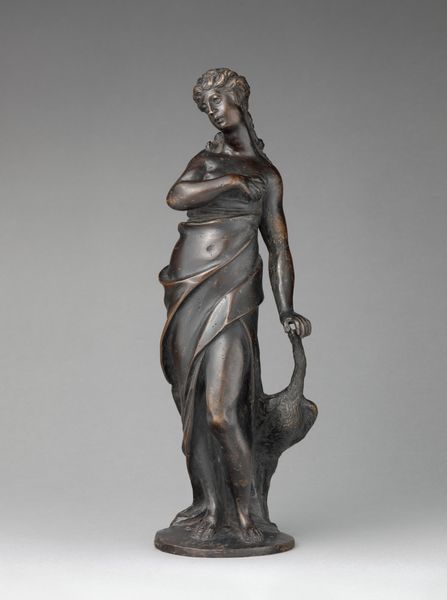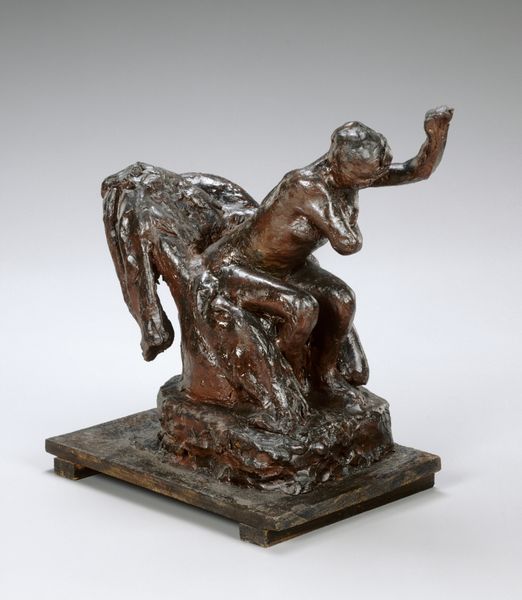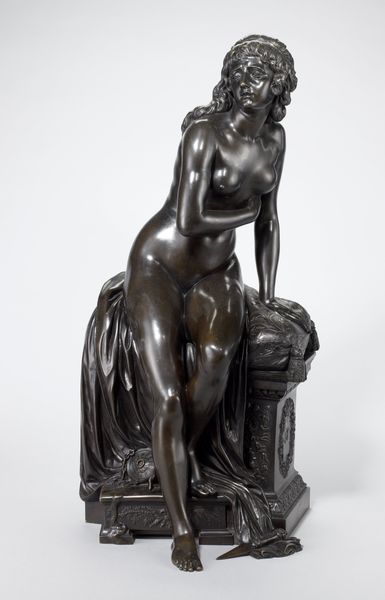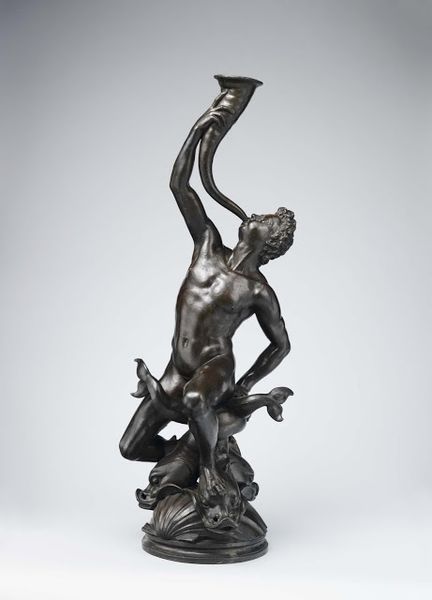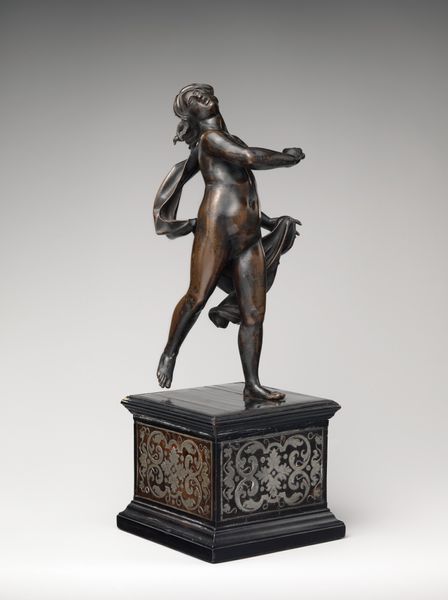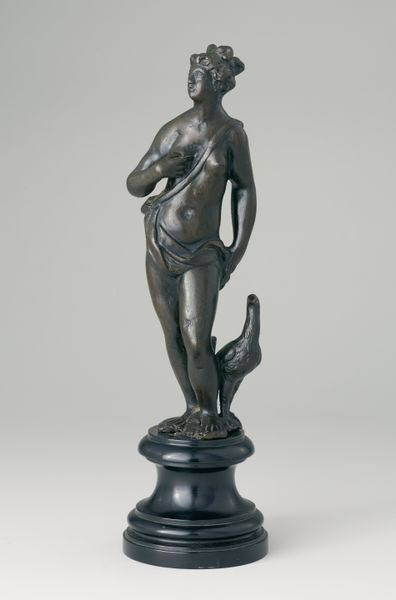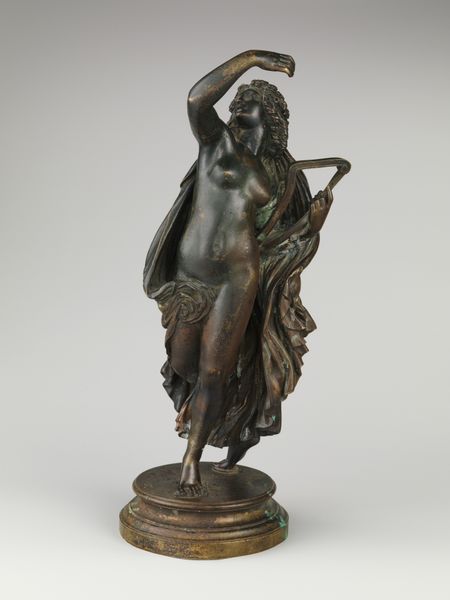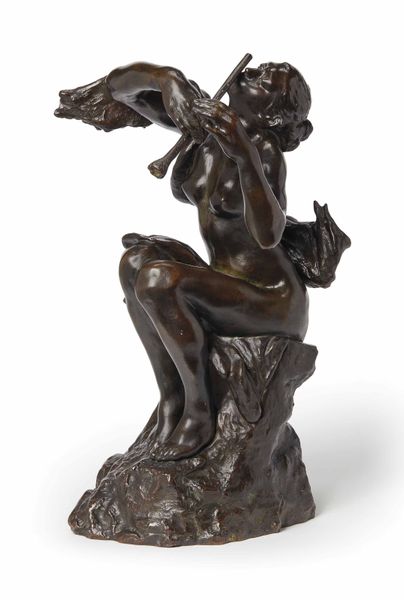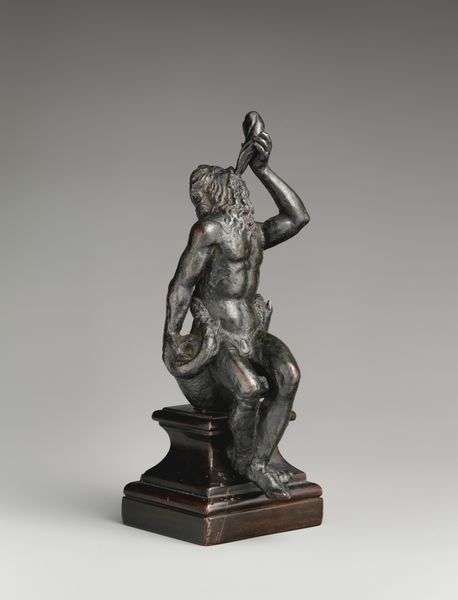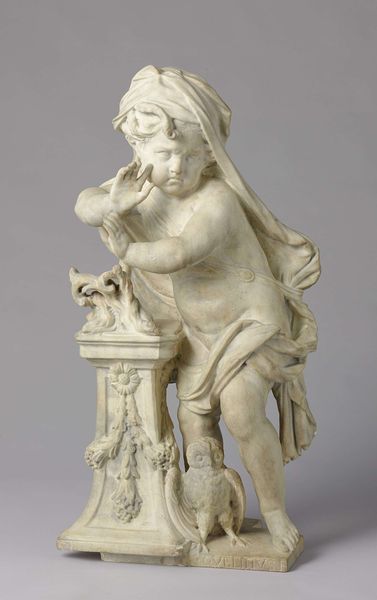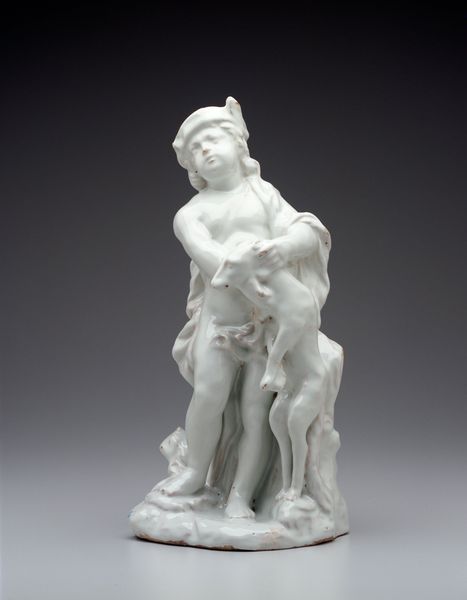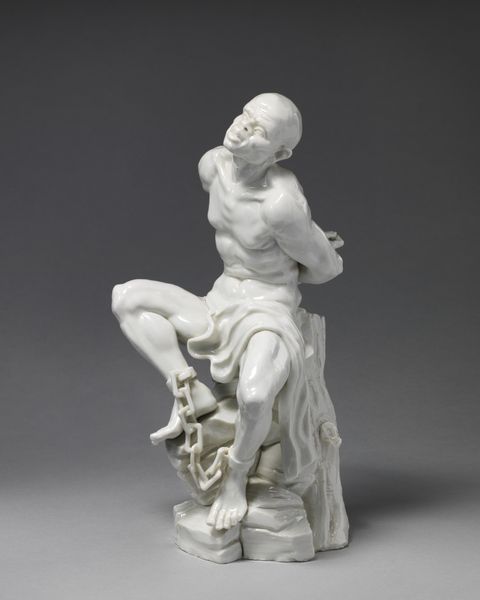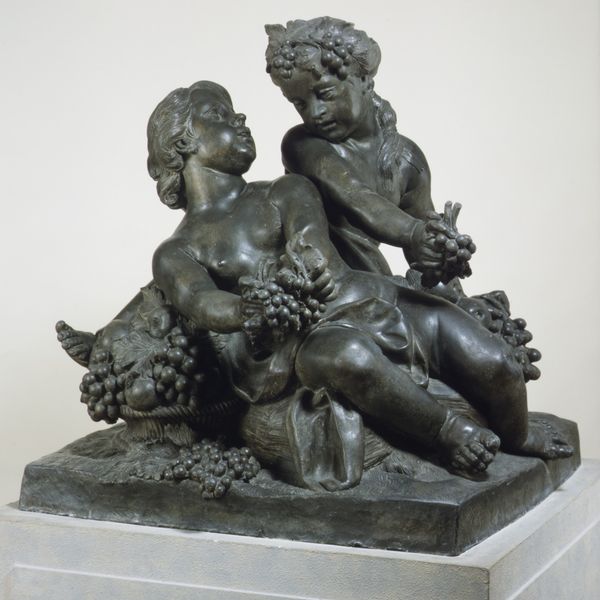
Dimensions: object: 781 x 667 x 330 mm
Copyright: © Millesgården, Sweden | CC-BY-NC-ND 4.0 DEED, Photo: Tate
Curator: Carl Milles, born in 1875, crafted this bronze sculpture, "Europa and the Bull," which now resides in the Tate collection. Editor: Immediately, I am struck by the composition - the contrasting textures and the dynamic interplay between the figures. It feels both classical and incredibly alive. Curator: Milles is drawing from a deeply problematic history of abduction in classical myth; here we see Europa, who, while seemingly willing, is taken by Zeus in the guise of a bull. It is hard to look past the uncomfortable power dynamics. Editor: Agreed, but note how the artist captures the rippling musculature of the bull; and Europa's almost joyful expression as she is carried away. The lines create movement, pulling the eye across the artwork. Curator: Which only enhances the romanticization of a narrative that obscures a history of exploitation and violence against women and the natural world. Editor: Perhaps. But I appreciate the formal qualities—the artist's skill in rendering form, texture, and motion, offering a new visual perspective on an ancient myth. Curator: I suppose engaging with such works forces us to confront the complicated legacies of art history, its complicity, and its potential for reinterpretation. Editor: Precisely. It invites us to engage, to question, and to find meaning in the interplay between form and narrative.
Comments
tate 7 months ago
⋮
http://www.tate.org.uk/art/artworks/milles-europa-and-the-bull-n04247
Join the conversation
Join millions of artists and users on Artera today and experience the ultimate creative platform.
tate 7 months ago
⋮
Carl Milles was the first non-British artist to be given an exhibition at the Tate Gallery. Milles was a Swedish-born sculptor who was best known in his day for public sculpture and large monuments. His traditional subject matter and classical style seem barely touched by the radical developments in modern sculpture which were happening around him. It may be for this reason that he was considered a suitable, if conservative, choice for an exhibition at the Tate Gallery in 1927. Europa and the Bull was on display in this exhibition and was bought by the gallery soon afterwards (see archive records in display case). Gallery label, August 2004
